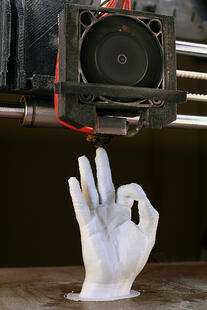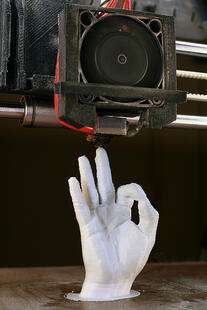A new dawn is looming in the manufacturing industry. 3D printing is democratizing design and production, enabling individuals to have small “factories” at their homes or offices. The idea that individuals can design and fabricate what they exactly want is bound to change the manufacturing industry for the better.

Democratization of manufacturing will make it possible for organizations to give consumers what they specifically want, when they want it and at a price they are willing to pay. Small, agile manufacturing organizations have already emerged to fill the gaps and niche requirements of consumers not addressed by big manufacturers.
3D Printing and Democratization of Manufacturing
As 3D printing services become more affordable, consumers will be able to manufacture custom product parts they need for various processes. While majority of 3D printing successes are on prototypes or confined in product testing grounds, things are bound to change in the next decade or so.
3D printing technology has the potential to disrupt and entire industry, just like laser printers did during the era of dot-matrix printers.
3D Printing and the Future of ERP
One of the major challenges that manufacturers face today is that customers are asking for more customization or variability to products than was the case a decade ago. To address these challenges, agile organizations have adopted strategies to be able to design and manufacture on an as-needed basis, and on the specifications of a particular order.
Manufacturing on demand does not come easy. At the very least, engineers have to be assigned to handle the orders, taking them from their core work of designing new products for the company. When organizations cannot innovate new products, they lose their core purpose.
Democratization of manufacturing can prevent this. Manufacturers can use 3D printing to take care of a large part of the custom manufacturing demand. Below are some ways in with democratization of manufacturing can work with ERP:
i) Design automation
3D printing can make design-on-demand concept a reality. However, manufacturing organizations do not have automated systems for the concept. To generate data for the 3D printing process, some form of automation will be required. ERP can be used to provide design specifications and deliver custom products fast without incurring huge costs.
But even more important, engineers can be freed from demand-to-design work and left to concentrate on other important work for the organization. Consumers with 3D machines can download digital blueprints of product parts they need and manufacture them at their own stations.
Design and process manufacturing ERP can be integrated with 3D printing software to ensure raw materials are processed in the correct order and industry standards to achieve working parts. ERPs will also enable companies be more efficient in their production processes as they can automate the generation of custom 3D drawing, models and manufacturing information for individual orders.
ii) Rapid Product Creation
3D printing can reduce the cost and time needed to produce customized parts with accuracy that is suitable for manufacturing, sales and engineering. With democratization, companies can avoid tedious and time-consuming manual processes by automatically generating:
- Detailed assembly models that can be used by engineers for greater analysis.
- Shop drawings such as quality, section, inspection and detail drawings at the assembly and subassembly levels.
- Specification CAD files (e.g. STP, IGS, and DEX files) drawings to be delivered to customers when an order is placed.
- High level quote drawings and models to support customer collaboration and product visualization during the customization and sales process.
iii) Innovative Design Methodology
Companies can integrate ERP with 3D printers to create full lines of product models. New products and parts lines can be manufactured by experimenting with different raw materials and process steps controlled by ERP without the risk of incurring tremendous losses. The resulting product models can be tested to ascertain they reach the minimum industry standards for their various intended functions.
There are also other benefits of integrating ERP with 3D printing. For example, most plastic and metal parts are usually clunky because they contain surplus material that is important for their functioning but not for making them. With 3D printing, this problem is eliminated. You only put materials where you need to have the material.
 Democratizing Manufacturing: What it Means For the Future of ERP">
Democratizing Manufacturing: What it Means For the Future of ERP">